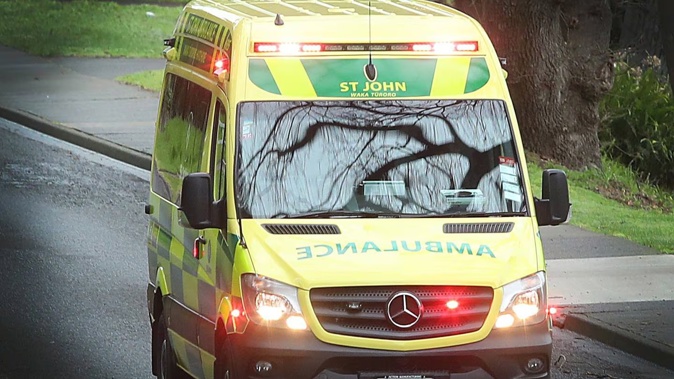
The Western Bay of Plenty was one of the busiest regions in New Zealand for ambulance callouts last year with the service responding to more than 20,000 incidents.
An ageing population and challenges accessing primary healthcare services have been cited as factors in the high number of callouts in the area.
Hato Hōne St John released a breakdown of responses for 2023, with referrals from health practitioners, breathing problems, and chest pain the top three reasons for callouts.
Falls and back injuries, people passing out, and abdominal pain or problems also featured highly.
Demand reduced for just seven of the 33 types of incidents or reasons recorded. . All others increased.
In a statement, Hato Hōne St John deputy chief executive of ambulance operations Dan Ohs said frontline ambulance staff responded to 437,960 incidents throughout New Zealand, up 4.2 per cent compared with the previous year.
Ambulances responded to 21,394 incidents in the Western Bay, which includes Tauranga city. This was up slightly on 2022 when ambulance crews responded to 20,987 incidents.
Nationally, call operators received 689,980 111 calls for help – up 2.4 per cent from 2022 and a 24 per cent increase compared to 2019.
Ohs said winter ailments and Covid-19 contributed to a higher workload over the colder months, with August being the busiest month for emergency call handlers.
Weather events such as Cyclone Gabrielle were also thought to have contributed to a rise in people needing attention for cold or heat exposure, Ohs said.
The busiest locations for ambulance responses were Christchurch, Auckland, Manawatū, Hamilton and the Western Bay of Plenty.
Operations manager for the Western Bay Mat Delaney said the reasons for the callouts were reflected in the national data.
However, it was notable there there had been a 17.6 per cent increase in responses to convulsions, and a 10.4 per cent increase in stroke-related callouts locally, he said.
Delaney attributed Western Bay’s busy demand to several factors, including an ageing population, and access to primary healthcare services becoming more challenging.
Western Bay councillor Allan Sole needed an ambulance after badly breaking his leg while inspecting a suspected malfunctioning drain at Waihī Beach in June.
The Beach Street culvert was thought to have been affected by recent flooding. On May 29, 27 people were evacuated, including elderly housing residents, after at least 60mm of rain fell in an hour.
Flooding at Waihī Beach on May 29. Photo / Susan Lean
Sole said it was concerning the district had become one of the busiest in New Zealand for emergencies.
The councillor, who represents the Waihī Beach and Katikati ward on the Western Bay of Plenty District Council, was wearing gumboots when he stepped on a piece of wood covering the culvert and it slipped beneath him.
Firefighters and ambulance staff took him to Tauranga Hospital.
Sole said at the time he was indebted to the first responders.
Seven months later, Sole told the Bay of Plenty Times he was getting around with a moon boot and was acutely aware of potential hazards such as uneven ground.
“I still use crutches or at least one crutch. I’m very careful of where I go,” he said.
Sole, who helps with local community patrols, said the ambulance data reflected what was happening locally for some callouts.
/cloudfront-ap-southeast-2.images.arcpublishing.com/nzme/26ESFRGKEZFCRAH5MMVXCLV26Y.jpg)
Western Bay of Plenty District Council councillor Allan Sole broke his leg in four places while trying to help clear a culvert in his ward of Waihī Beach, prompting a call to an ambulance. Photo / Alex Cairns
These included referrals from doctors and people with breathing difficulty, he said.
“It’s certainly been busy,” Sole said, referring to the thousands of holidaymakers visiting Waihī Beach over summer.
Sole said the data was “concerning” and he was interested in what measures could be made to make things safer for people.
Kiri Gillespie is an assistant news director and a senior journalist for the Bay of Plenty Times and Rotorua Daily Post, specialising in local politics and city issues. She was a finalist for the Voyager Media Awards Regional Journalist of the Year in 2021.
Take your Radio, Podcasts and Music with you

/cloudfront-ap-southeast-2.images.arcpublishing.com/nzme/PWIVATL4OVBLDCFOSDV6IKHP6U.JPG)








